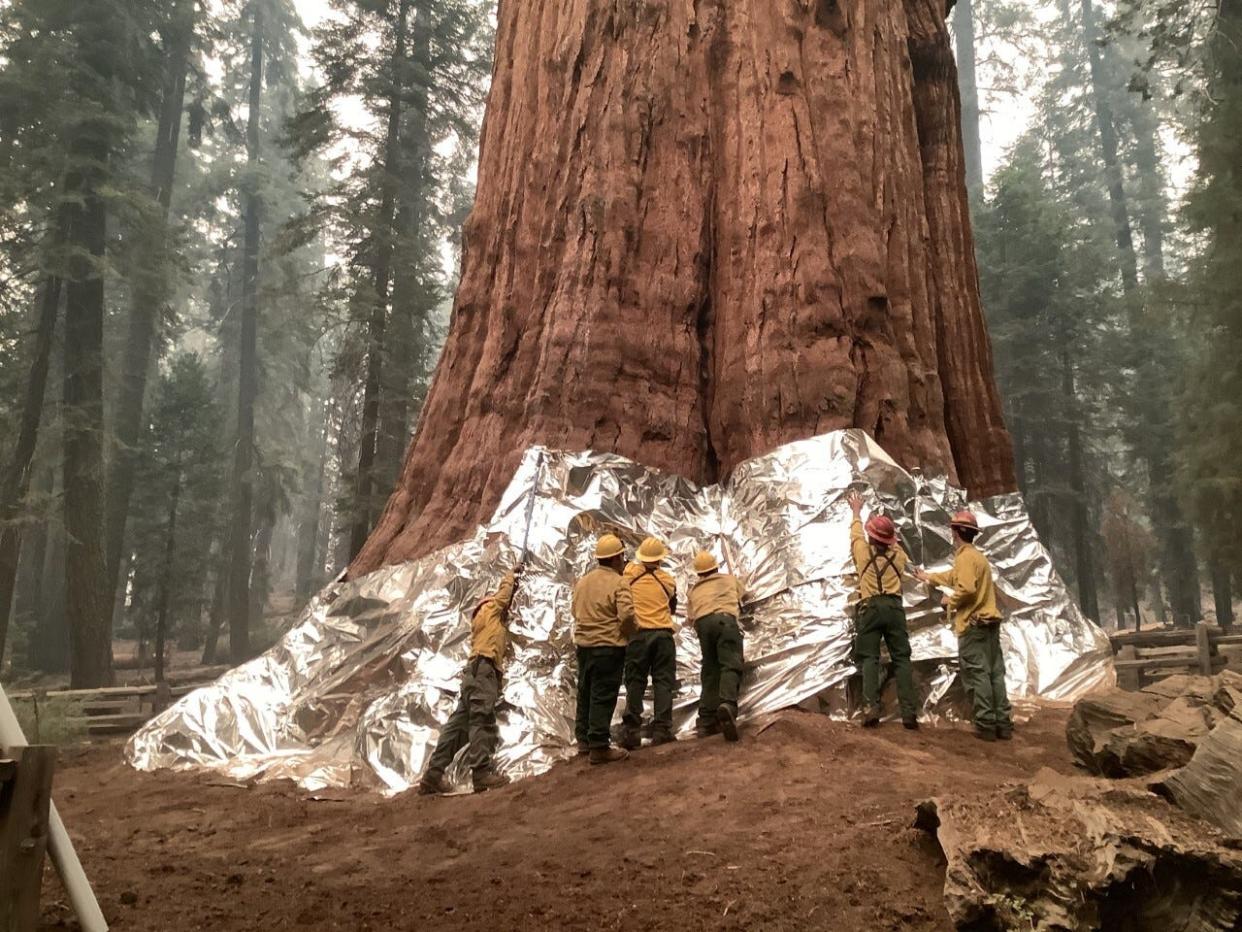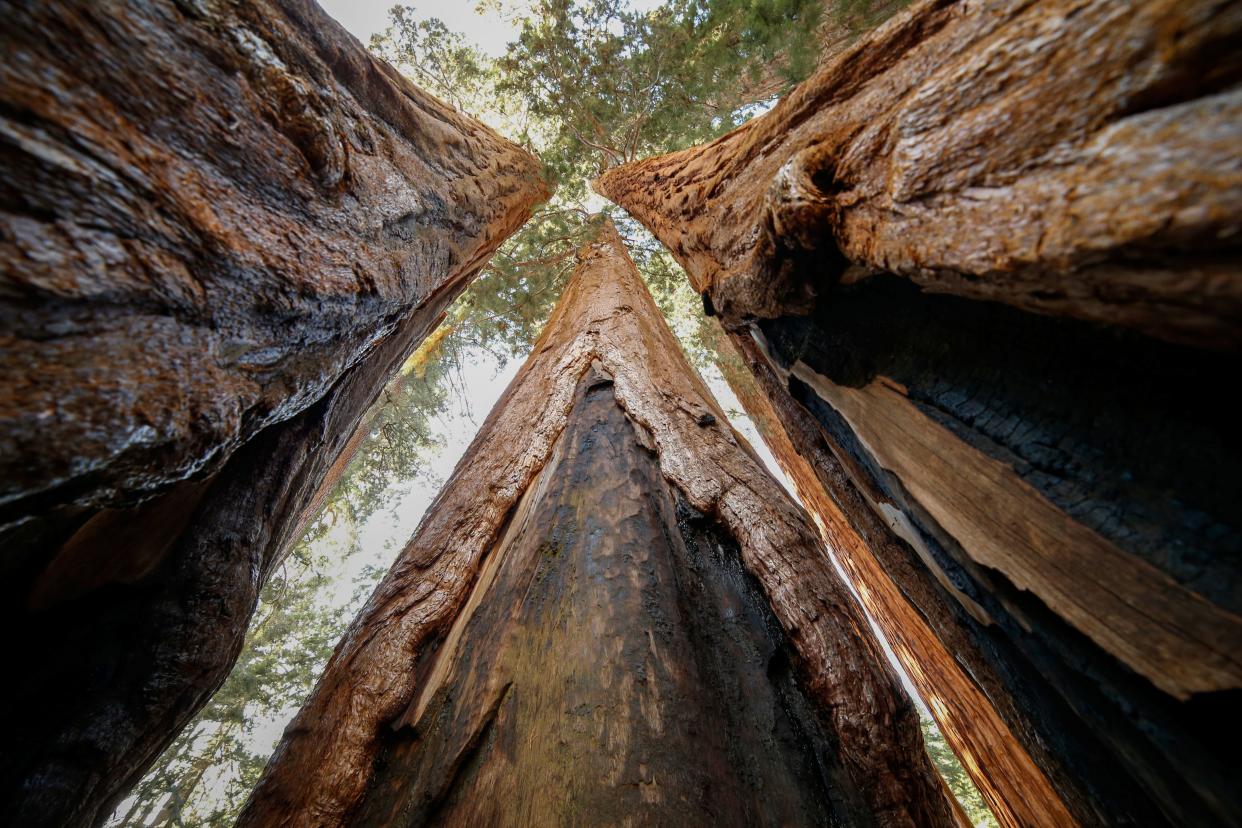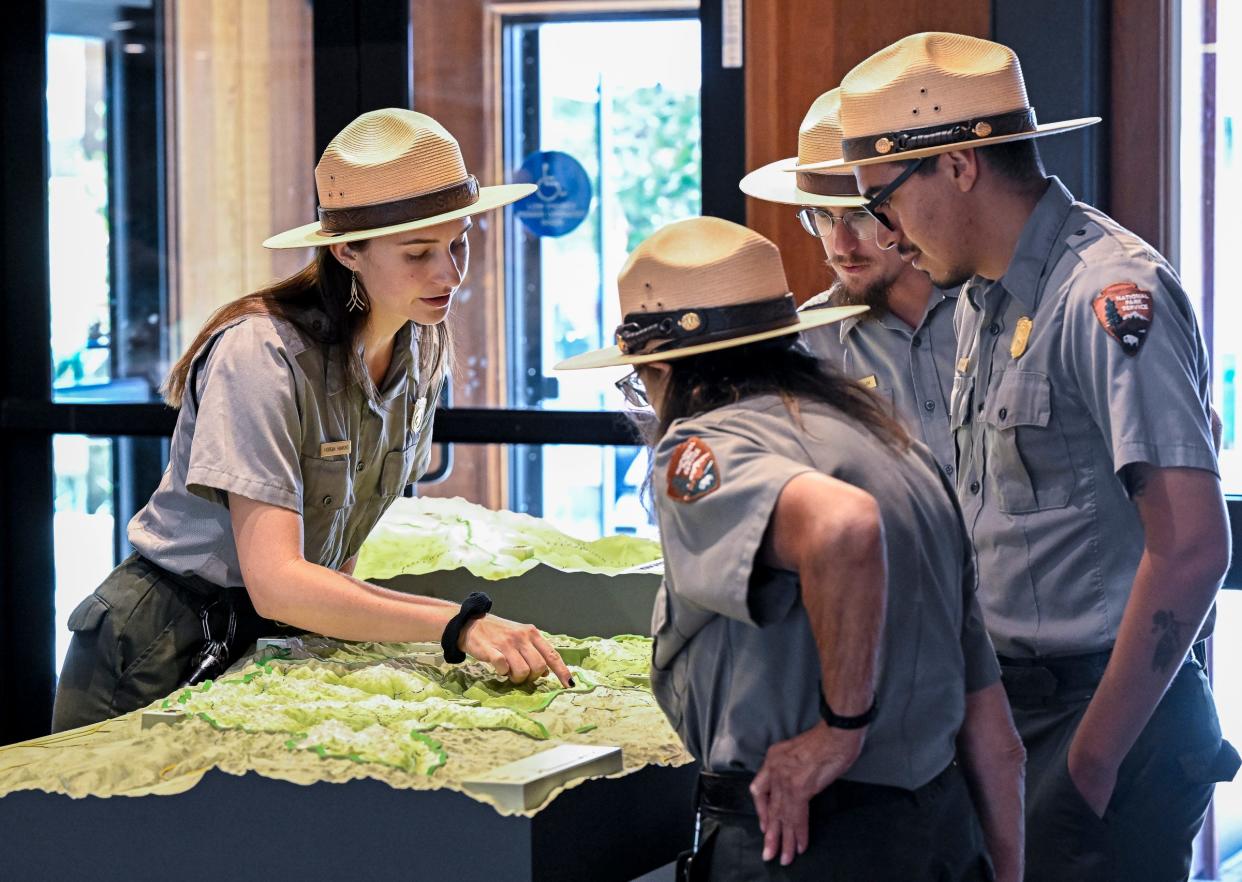Sequoia National Park’s giants are the friendly type. Hugs are welcome.
People all over the world watched with rapt attention in 2021 as a wildfire threatened to engulf the world’s largest tree. Firefighters carefully wrapped the base of the General Sherman Tree in shiny, protective blanketing as flames drew closer at Sequoia National Park.
Ultimately, the roughly 275-foot-tall icon was spared, but other giant sequoias weren’t so lucky. Redwood Mountain Grove in neighboring Kings Canyon National Park “lost an estimated 974 to 1,574 large sequoias,” according to Sequoia and Kings Canyon National Parks, which are managed jointly.
“Given the amount of giant sequoias that were lost in the last few years – almost 20% of the entire giant sequoia population was lost in a short amount of time – we're not feeling as confident as we were just a few years ago about these trees really being around for generations and generations to come,” said Sintia Kawasaki-Yee, chief of Communications and Management Support for both parks in California. “We really want to bring attention to their mortality.”
That’s not the only thing Sequoia visitors should know.

What is so special about Sequoia National Park?
Sequoia protects some of the largest trees in the world and a wide array of habitats.
“I would say the most special feature is that you enter at about, I want to say, 1,600 feet of elevation and within about a 45-minute span, you're able to reach 6,500 feet, which is a huge elevation gain in a really small amount of miles,” said Kawasaki-Yee. “You come in in the foothills area. In the spring, we have really great wildflowers. We have the river. We have great access there year-round, but if you drive just 45 minutes into Giant Forest, you get to see the change in the terrain and wildlife.”
Visitors can feel the change too, as temperatures dip and winds whip higher up, so pack accordingly.
Is the General Sherman Tree the tallest tree in the world?
No. It’s not the tallest tree in the world. That title belongs to Hyperion, a coast redwood at Redwood National Park, according to Guinness World Records.But the General Sherman Tree is the largest by volume, with a trunk volume of 52,508 cubic feet, according to the park.

Can you touch the General Sherman Tree?
No. “The Sherman Tree is fenced off, so you cannot touch it, but there are many other sequoias in that same area that you can definitely walk up to and touch,” said Kawasaki-Yee.
She recommends feeling their fibrous bark, which she noted is softer to the touch than one might expect.
“Feel free to hug a tree, connect with a tree,” she added. “That connection is really important to really build that connection for people and hopefully that commitment to protect these trees in the long term.”
From Acadia to Zion: What travelers should know about each of America's national parks
Which park is better, Redwood or Sequoia?
“They're basically siblings, and so it's like comparing your kids,” Patrick Taylor, Interpretation and Education manager for the National Park Service at Redwood, told USA TODAY in April. “You love them both for slightly different reasons.”
He explained that giant sequoias tend to have more volume to them.
“So they're bigger in the sense that they usually have a wider base, and they don't taper off as fast,” he said. “The coastal redwoods are usually a little taller and a little more slender.”

Is Sequoia National Park free?
No. Most visitors will have to pay a flat $35 vehicle entrance fee that covers access to both Sequoia and Kings Canyon.
Certain groups are eligible for free entry to all national parks, namely military service members, veterans, Gold Star families, U.S. citizens and permanent residents with permanent disabilities, and fourth graders and their families.
Can you just drive through Sequoia National Park?
Yes. “You can actually do both parks in one drive,” said Kawasaki-Yee. “A lot of people that are doing road trips will drive through both parks on the same day or the same trip.”
The park is located about a 1 ½ hour drive from Fresno. Fresno Yosemite International Airport is the nearest commercial airport.

What is the best time of year to visit Sequoia National Park?
Kawasaki-Yee recommends visiting in the spring or fall to avoid summer crowds and winter road closures.
“Maybe right before Memorial Day weekend, so you don't get the crowds but you still get access to the areas,” she suggested.
Can I stay inside Sequoia National Park?
Yes. The park offers a variety of on-site camping and lodging, though some lodges, operated by third parties, are only open seasonally.
Who are the Indigenous people of the area?
“Sequoia and Kings Canyon National Parks are the homelands of the Mono (Monache), Yokuts, Tübatulabal, Paiute, and Western Shoshone,” according to the parks’ website, which lists the following affiliated federally recognized tribes:
◾ Big Pine Band of Owens Valley Paiute Shoshone Indians
◾ Big Sandy Rancheria Band of Western Mono Indians
◾ Fort Independence Indian Community of Paiute Indians
◾ North Fork Rancheria of Mono Indians
◾ Paiute-Shoshone Indians of the Lone Pine Community
◾ Picayune Rancheria of the Chukchansi Indians
◾ Santa Rosa Rancheria Tachi-Yokut Tribe
◾ Utu Utu Gwaitu Paiute Tribe of the Benton Paiute Reservation
This article originally appeared on USA TODAY: Sequoia National Park is a land of giants waiting for you to visit
